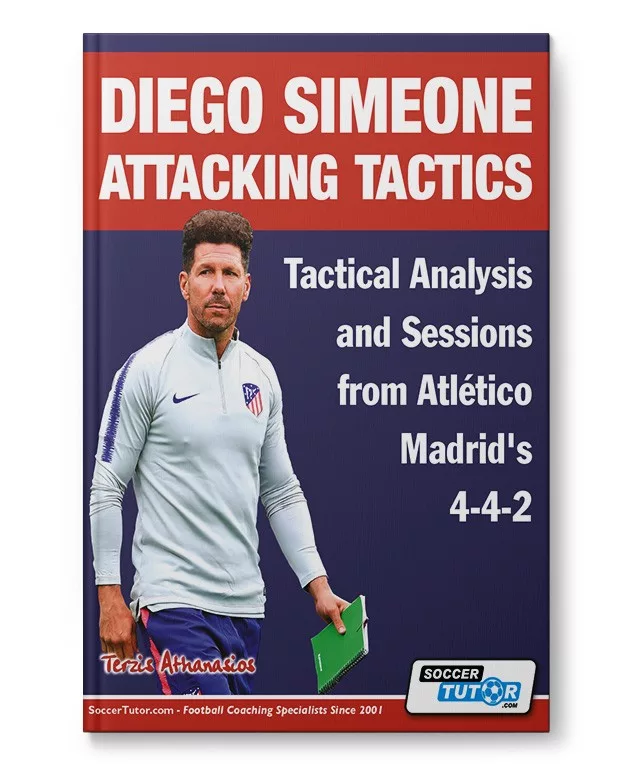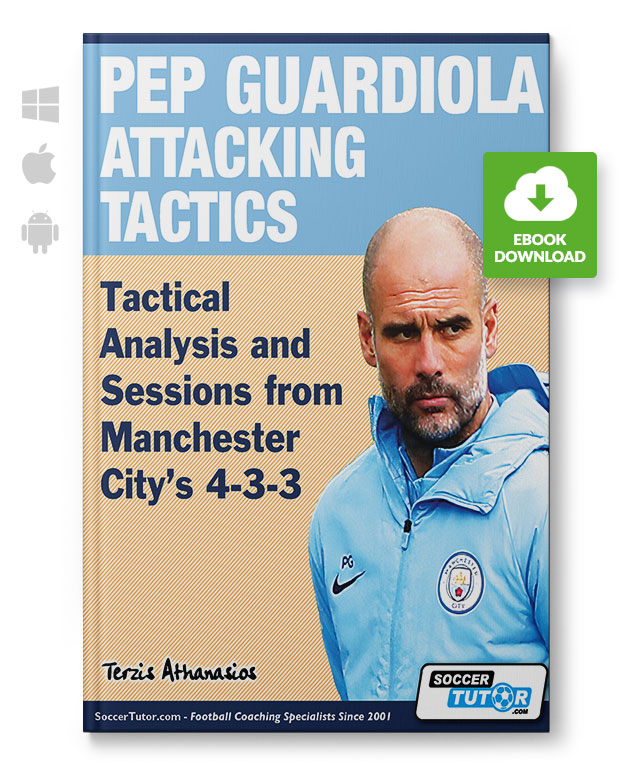Soccer is not just a game; it’s a strategic battle where tactics play a crucial role. Coaches across the globe employ various formations to outsmart their opponents. This article delves into some of the most prevalent tactical formations in soccer, exploring their unique characteristics and the reasons behind their popularity.
4-4-2 Formation – The Classic Approach
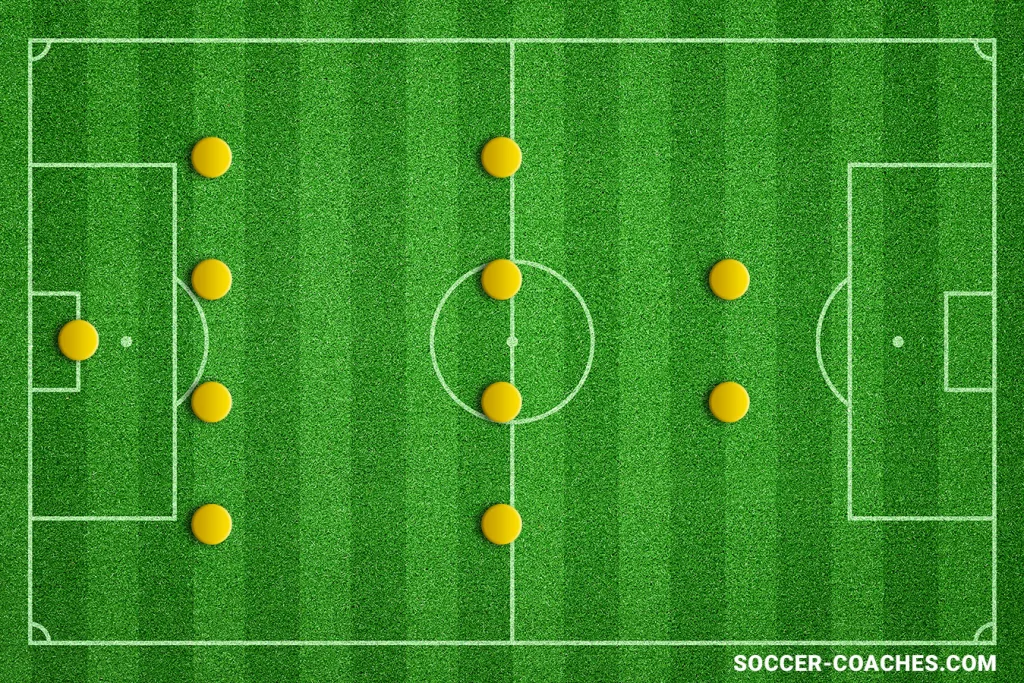
Regarded as one of soccer’s most traditional formations, the 4-4-2 is a testament to the adage “simplicity is the ultimate sophistication.” Comprising four defenders, four midfielders, and two strikers, this formation balances defense and attack. The midfield duo is pivotal in controlling the game’s tempo, while the wingers supplement both defense and attack. Teams like Atletico Madrid and Leicester City have demonstrated the enduring effectiveness of this setup.
Pros:
- Balanced structure, offering both defensive solidity and offensive options.
- Simplifies roles and responsibilities, making it easier for players to understand.
- Effective in wide areas, with wingers providing support to both defense and attack.
Cons:
- Can struggle against formations with an extra midfielder (like 4-3-3 or 4-2-3-1).
- Less control in midfield, particularly against teams that pack the midfield.
- Risk of becoming too linear and predictable in attack.
Coaches who use this formation:
- Diego Simeone (Atlético Madrid): Known for his disciplined, defensively strong team structure.
- Claudio Ranieri (Former Leicester City): Masterminded Leicester City’s fairy tale Premier League win in 2015-2016 using this formation.
Diego Simeone Attacking Tactics

Learn how to Attack and Counter-Attack “from one of the best coaches in the world” with 64 Practices & Variations based on 73 Tactical Situations from Atlético Madrid’s 4-4-2
4-3-3 Formation – Unleashing the Attack
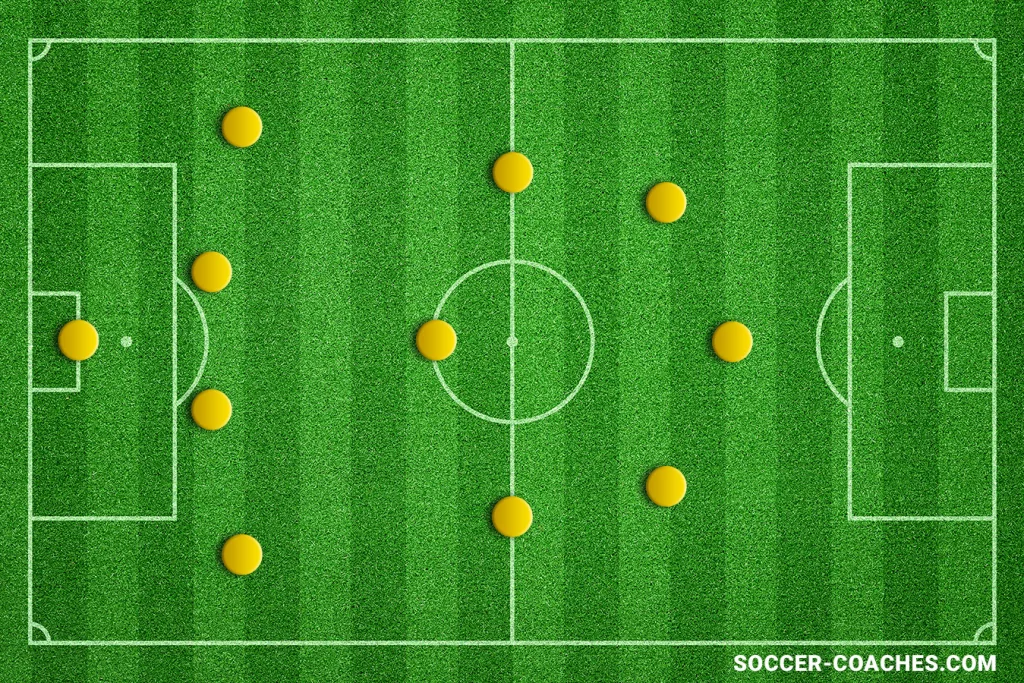
The 4-3-3, a favorite among teams that cherish an offensive playstyle, features four defenders, three midfielders, and three forwards. This formation is distinguished by its fluid attacking play, facilitated by an advanced midfielder and dynamic wingers supporting a central striker. Clubs like Liverpool and Barcelona exemplify the attacking potency of the 4-3-3, often overwhelming opponents with their offensive firepower.
Pros:
- Offers strong attacking options with three forwards.
- Provides width, stretching the opposition’s defense.
- Midfield trio allows for control in the center of the park.
Cons:
- Requires highly energetic and disciplined wingers to balance attack and defense.
- Can leave the defense exposed if the midfielders and forwards do not track back.
- Relies heavily on the forwards’ ability to create and capitalize on chances.
Coaches who use this formation:
- Pep Guardiola (Manchester City): Emphasizes fluid attacking play with a focus on ball control and high pressing.
- Jürgen Klopp (Liverpool): Known for his ‘Gegenpressing’ style, utilizing fast, attacking football with wide forwards.
eBook – Pep Guardiola Attacking Tactics

Learn to Coach “Pep Guardiola’s Innovative Attacking Tactics” – to Create Chances and Score Goals – with 12 Full Sessions (70 Practices & Variations) based on 12 Tactical Situations from Manchester City’s 4-3-3
3-5-2 Formation – Fortifying the Defense

In the 3-5-2 formation, three central defenders provide robust defense, backed by a flexible midfield quintet and two forwards. This setup, used by teams like Chelsea and Inter Milan, offers a compact defense while allowing for versatile attacking options through the flanks. The presence of a sweeper adds an additional layer of security against counter-attacks.
Pros:
- Strong central defense with three center-backs.
- Provides numerical superiority in midfield.
- Flexibility in attack and defense, with wing-backs contributing to both.
Cons:
- Vulnerable to attacks from the flanks if wing-backs are caught upfield.
- Requires center-backs to be comfortable with wide defensive roles.
- Demands high stamina and discipline from wing-backs.
Coaches who use this formation:
- Antonio Conte (Inter Milan, Tottenham Hotspur): Favors this formation for its balance between a solid defense and a flexible attack.
- Louis van Gaal (Former Manchester United, Netherlands): Often employed this formation, emphasizing control and flexibility.
4-2-3-1 Formation – Mastering Balance

The 4-2-3-1 is a harmonious blend of defense and offense. It employs four defenders, two holding midfielders, three attacking midfielders, and a lone striker. This formation’s strength lies in its adaptability, providing solid defensive cover while enabling creative freedom for attacking midfielders. Teams like Bayern Munich and Borussia Dortmund have successfully utilized this formation to achieve a perfect equilibrium between attacking flair and defensive resilience.
Pros:
- Balanced approach with clear defensive and attacking roles.
- Provides numerical advantage in midfield.
- Offers creativity and attacking support through the three attacking midfielders.
Cons:
- Requires disciplined defensive midfielders to prevent exposure of the back four.
- Attacking midfielders must effectively transition between attack and defense.
- Lone striker can become isolated if not supported properly.
Coaches who use this formation:
- José Mourinho (AS Roma, Former Manchester United, Real Madrid): Often uses this formation for its defensive stability and counter-attacking potential.
- Joachim Löw (Former Germany National Team): Successfully utilized this formation in Germany’s World Cup 2014 campaign.
5-3-2 Formation – Emphasizing Caution
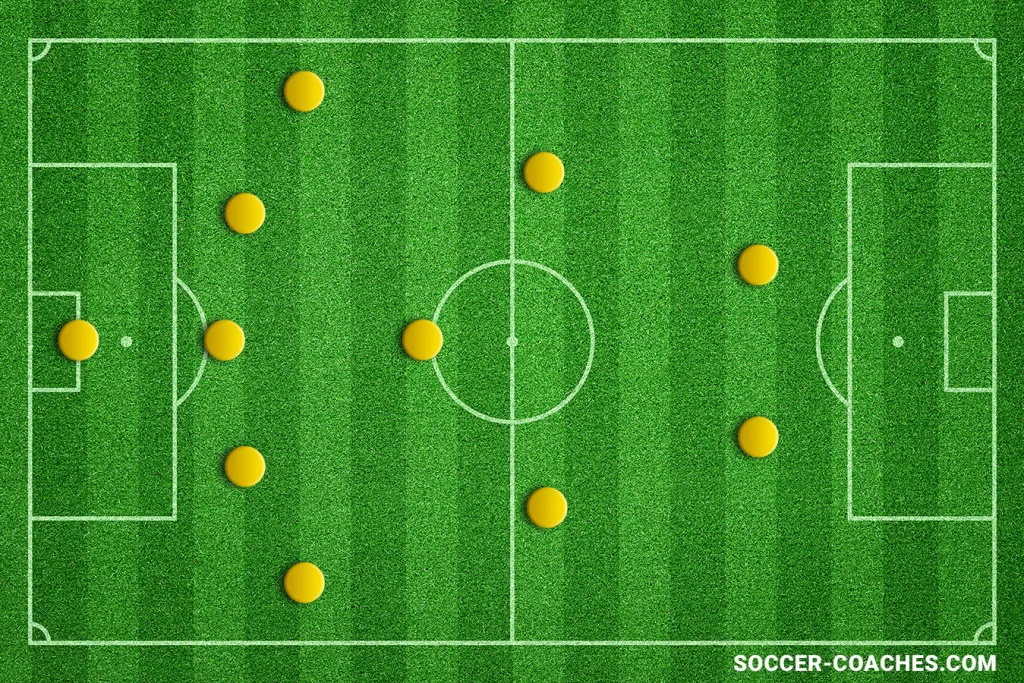
An addition to the traditional formations is the 5-3-2, prioritizing defensive stability. It features five defenders, three midfielders, and two forwards. This formation is particularly effective against teams with strong attacking wings, as it provides ample defensive cover on the flanks. It’s a favored choice for teams looking to maintain a clean sheet while exploiting counter-attacking opportunities.
Pros:
- Extremely solid defensively with five at the back.
- Effective for counter-attacking play.
- Midfield compactness can disrupt the opposition’s attacking play.
Cons:
- Can lack width, relying heavily on wing-backs for wide play.
- Risk of overcrowding in central areas, limiting creative play.
- Offensive play can be limited, especially if wing-backs are not sufficiently attacking-minded.
Coaches who use this formation:
- Roberto Martínez (Belgium National Team): Has used this formation to utilize Belgium’s strong central defensive and midfield players.
- Gareth Southgate (England National Team): Employed this formation in the 2018 World Cup, taking England to the semi-finals.
Team Philosophy and Coach’s Vision
The choice of formation in soccer is a reflection of a team’s philosophy, the coach’s vision, and the players’ capabilities. From the classic 4-4-2 to the balanced 4-2-3-1, each formation carries its unique strengths and challenges. Understanding these nuances is key to appreciating the strategic depth of soccer, a game where tactics are as important as talent.
eBook – Pep Guardiola Attacking Tactics

Learn to Coach “Pep Guardiola’s Innovative Attacking Tactics” – to Create Chances and Score Goals – with 12 Full Sessions (70 Practices & Variations) based on 12 Tactical Situations from Manchester City’s 4-3-3

